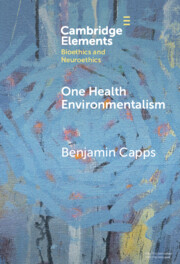Element contents
One Health Environmentalism
Published online by Cambridge University Press: 19 April 2024
Summary
- Type
- Element
- Information
- Online ISBN: 9781009271097Publisher: Cambridge University PressPrint publication: 16 May 2024
References
- 3
- Cited by

